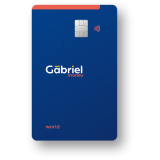
You’ve successfully filed your taxes – congratulations! But the journey doesn’t end after you hit “submit.” To ensure everything goes smoothly, there are a few steps to take and things to keep in mind. Here’s your guide to what comes next.
Tracking Your Refund
Wondering when your refund will arrive? The IRS makes it easy to track the status of your tax return:
- IRS “Where’s My Refund?” Tool: Available on the IRS website and app (IRS2Go), this tool provides real-time updates. You’ll need your Social Security Number (or ITIN), filing status, and the exact refund amount.
- Processing Times: E-filing speeds up the process. Most refunds are issued within 21 days if you choose direct deposit. Paper returns may take longer.
- Direct Deposit Benefits: If you opted for direct deposit, your refund will be sent directly to your bank account. It’s faster and more secure than waiting for a check by mail.
If your refund is delayed, don’t panic—double-check for errors on your return or follow up with the IRS using their hotline.
Amending Errors on Your Return
Mistakes happen, and the IRS understands that. If you’ve made an error, don’t worry, you can amend your tax return:
- Form 1040-X: This is used to correct errors on your original return. For 2025, you can e-file amendments or submit them by mail, depending on your filing method.
- Common Errors: Forgetting to report income, missing deductions or credits, or entering the wrong Social Security Number are all fixable.
The key is to act promptly to avoid penalties or interest.
Planning Ahead for Next Year
It’s never too early to set yourself up for success next tax season. Here’s how you can make it smoother:
- Adjust Your Withholdings: If you owed money or received a large refund, consider updating your Form W-4 with your employer. Aim to match your withholdings closely to your actual tax liability.
- Organize Documents Year-Round: Keep a file for receipts, pay stubs, and any tax-related paperwork to avoid a last-minute scramble.
- Review Major Life Changes: Got married, had a child, or switched jobs? These changes can affect your taxes, so update your records accordingly.
Practical Tips for Refund Tracking and Planning
- Use Online Tools: Take advantage of refund tracking platforms and financial management apps to keep tabs on your refund and prepare for next year’s filing.
- Automate Savings: If you expect a refund, consider setting it aside in a high-yield savings account or using it to pay down debt.
- Reevaluate Withholdings Annually: Review your W-4 after any major financial or personal changes.
In Conclusion
Filing may be done, but staying proactive can save you time and money down the line. Use these tips to track your refund, correct any mistakes, and prepare for a stress-free tax season next year.
While this marks the final article in our series on tax filing, stay tuned for a special wrap-up edition summarizing the key points we’ve covered all week. You’ve got this!
Disclaimer:
“The information provided on this website is for educational purposes only and does not constitute financial, investment, or tax advice. Please consult a qualified professional for personalized guidance.”






